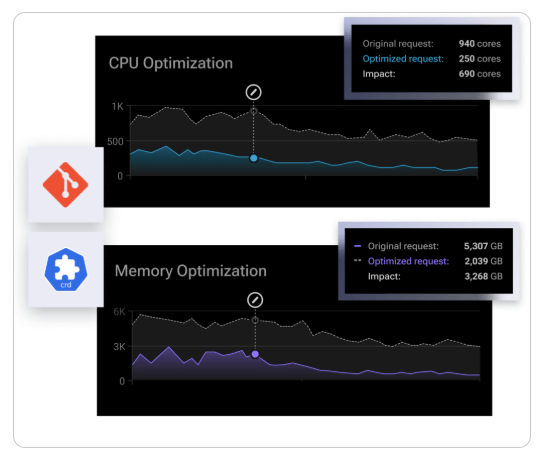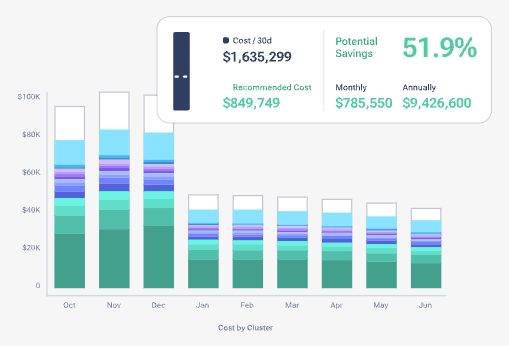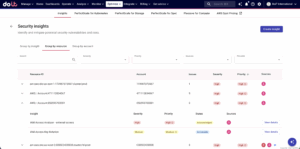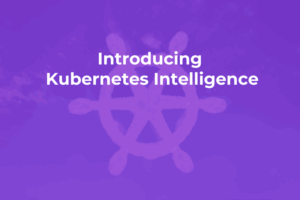9 Proven FinOps Best Practices to Cut Your Cloud Costs
As cloud adoption accelerates, solid financial operations (FinOps) practices have never been more important. FinOps is an operational framework that brings together finance, engineering, and product teams to manage cloud spend collaboratively. The aim is not just cost reduction, but cost optimization: enabling innovation while maintaining financial accountability.
Without clear ownership, real-time visibility, and continuous cost controls, cloud spend can quickly get out of hand, throwing off budgets and derailing business goals. In this article, we examine nine proven FinOps best practices to help you align cloud investments with business value. Along the way, we’ll break down the three core principles of FinOps—collaboration, real-time data visibility, and continuous optimization—along with common pitfalls and actionable strategies to overcome them.
9 FinOps best practices worth implementing
Here are nine essential FinOps best practices to help you optimize cloud costs and drive greater value from spend:
1. Establish clear policies for cost governance and accountability
Effective FinOps requires a foundation of structured governance. This means formally defining cloud cost ownership at the team, service, or application level and ensuring those responsible have visibility into—and accountability for—their spend.
These cost governance frameworks should include:
- Cost allocation policies based on specific business units, cost centers, or products
- Approval workflows for provisioning, resizing, or scaling cloud resources tied to budget thresholds
- Policy-based automation to enforce limits, trigger alerts, and flag anomalies
- Periodic reviews of usage trends and “forecasted” versus “actual” spend by accountable owners
Without clearly assigned responsibility, cloud environments usually suffer from underutilized resources, overcommitment, and weak cost-control feedback loops—especially in engineering-led organizations.
When organizations set clear accountability, they lay the groundwork for responsible cloud spending and put an end to the “not my budget” mindset that often causes overprovisioning and waste.
2. Build cross-functional FinOps teams with shared goals and KPIs

FinOps is most effective when it bridges the traditional gaps between finance, engineering, and operations. By bringing together dedicated FinOps teams with members from these departments, cloud costs become managed with full context, balancing financial efficiency with service reliability and business growth.
To be effective, teams should align on shared KPIs that balance cost optimization with performance and innovation goals. These might include:
- Cost per transaction, request, or customer segment
- Utilization rates of provisioned infrastructure (e.g., CPU/memory for compute)
- Percentage of spend covered by committed use or savings plans
- Waste spend rate (e.g., unattached volumes, idle instances)
- Service-level adherence while optimizing cost (e.g., error rates, latency targets)
These KPIs help bridge competing incentives, making cloud financial management an engineering-aligned initiative—not just a finance concern.
When teams work together toward aligned incentives, they’re more likely to spot optimization opportunities without sacrificing operational excellence or development speed.
3. Leverage tagging strategies for accurate cost allocation
Tagging is a foundational practice for achieving cost transparency and allowing accurate chargeback or showback models in the cloud. When implemented, it lets organizations accurately allocate costs to specific departments, applications, environments, or projects.
Effective tagging requires:
- Standardized taxonomy for key dimensions (e.g., owner, project, environment, cost-center)
- Automation via infrastructure-as-code or policy-as-code to enforce tag requirements at provisioning
- Ongoing governance through automated compliance checks and remediation workflows
- Cross-cloud consistency to support multicloud reporting and analytics
Tagging resources properly enables detailed cost reporting, which makes it easier to spot spending patterns and find optimization opportunities. This visibility helps teams see how their actions affect costs, allowing them to make smarter financial decisions.
4. Optimize cloud commitments (e.g., Reserved Instances, Savings Plans)
Cloud providers offer significant discounts for committing to resource usage over time. Options like AWS Reserved Instances, Savings Plans, Google Cloud Committed Use Discounts, and Azure Reservations can reduce costs by upward of 70% compared to on-demand pricing, but only when aligned with actual usage patterns.
To optimize commitment coverage without incurring waste, organizations should:
- Analyze usage baselines across compute, storage, and database services to identify consistent workload patterns
- Layer short- and long-term commitments to balance savings with flexibility (1-year convertible plus 3-year standard)
- Monitor utilization rates of active commitments and flag underutilized ones for corrective action (e.g., exchanges, resells where supported)
- Use commitment management tools (e.g., Flexsave, CloudHealth, or native tools) to track, forecast, and recommend adjustments
- Establish ownership at the business unit or FinOps team level to avoid duplicative or siloed purchasing
Mature FinOps teams typically target 70%–90% of their stable workloads with commitments, with mechanisms in place to reallocate or optimize underperforming commitments
5. Automate and schedule non-production environments to reduce costs
Development, testing, and staging environments often represent a significant share of cloud spend despite being underutilized outside working hours. Automating start/stop schedules for these environments is a low-effort, high-impact FinOps win.
To help reduce costs, create automations that:
- Enforce default off-hours schedules (e.g., nights, weekends, holidays) for eligible environments across accounts or projects
- Dynamically shut down or scale down resources based on usage patterns, inactivity detection, or cost anomalies
- Offer developers controlled overrides through self-service tooling, such as Slack bots or infrastructure-as-code exceptions
- Integrate schedules with CI/CD pipelines to avoid disruptions during active deployments or testing
According to Amazon Web Services (AWS) and Google Cloud, organizations can cut costs for these environments by as much as 75% by scheduling non-production resources to run only during business hours (40 hours a week instead of 168). These savings compound over time and are foundational to early-stage FinOps maturity.
6. Monitor idle resources and rightsizing opportunities continuously
Cloud environments are dynamic, with workload requirements constantly evolving. Without automated guardrails, they frequently accumulate underutilized or idle resources. These include overprovisioned instances, unattached volumes, idle load balancers, and oversized Kubernetes nodes—each contributing to unnecessary spend.
To optimize resource efficiency, organizations should implement tools that:
- Analyze sustained low utilization across compute, memory, disk, and network metrics (e.g., CPU < 20% over 7+ days)
- Surface actionable rightsizing recommendations, including instance family/type switches or autoscaling adjustments
- Detect orphaned assets, such as unattached storage or unused IP addresses, for decommissioning
- Integrate with infrastructure provisioning pipelines to prevent over-allocation at the source
Continuous rightsizing—automated or engineer-reviewed—can save you 20%–30% on costs depending on workload volatility, especially in development or analytics-heavy environments.
7. Conduct regular well-architected reviews for optimization
The way you design your cloud architecture can have a massive impact on costs and performance. Regular well-architected reviews help you check your cloud setup against best practices and find ways to improve efficiency and save money.
These reviews should evaluate:
- Whether workloads are using appropriate services for their requirements
- If storage tiers match data access patterns and retention needs
- Where serverless or containerized approaches might replace traditional VMs
- Deep workload analysis that automation can’t detect (like replacing VMs with functions)
These reviews can reveal architectural improvements that not only reduce costs but also enhance performance, security, and reliability—delivering multiple benefits from a single effort. While scripts can identify rightsizing opportunities, the most significant optimizations often come from getting into the weeds and understanding workload characteristics that aren’t easily quantifiable through automated tools.
8. Use real-time, accessible data for informed decision-making

Effective FinOps needs up-to-date, easy-to-access cost data so teams can make smart decisions. Relying on monthly cloud bills just isn’t enough to stay on top of costs.
Implement real-time cost monitoring tools that:
- Provide daily (or more frequent) cost updates
- Make cost data accessible to all stakeholders through easy-to-understand dashboards
- Enable drill-down capabilities to identify cost drivers
When teams see how their decisions affect finances, they naturally become more cost-conscious and can catch and address spending issues before they turn into bigger problems.
9. Establish a cost-conscious FinOps culture within your org
Saving the best for last: One of the most impactful FinOps practices is building a cloud cost optimization culture that values cost efficiency as much as performance and innovation. Making this shift isn’t always easy: It requires strong leadership, proper education, and the right incentives to truly take hold.
To create and foster this culture:
- Include cost optimization objectives in performance evaluations
- Celebrate cost-saving wins and share success stories across teams
- Provide training on cloud economics and FinOps principles
- Make cost data transparent and accessible to everyone
Instead of a once-in-a-while cost-cutting exercise, a strong FinOps culture turns cost optimization into an everyday part of decision-making where every team member has an impact. If engineers are taught to optimize for both performance and cost, then you don’t need to do as much remediation in the long run.
The core principles at the foundation of FinOps
While the tips above offer practical steps, getting a handle on the core principles of FinOps makes it easier for organizations to tweak and adapt these practices to fit their specific needs.
At its foundation, FinOps rests on six main principles:
- Teams need to collaborate. Finance, technology, product, and business teams need to work together in near real time. As the FinOps Foundation notes, this collaboration is essential because “the cloud operates on a per-resource, per-second basis.” Breaking down traditional departmental silos allows organizations to respond quickly to changing cloud usage patterns.
- Business value drives technology decisions. Business outcomes should drive cloud decisions, not technology preferences. By assessing cloud investments using unit economics and value-based metrics, organizations can carefully balance cost, quality, and speed.
- Everyone takes ownership of their technology usage. Cloud cost accountability should lie with the engineers, starting from architecture design and continuing through day-to-day operations. Teams should have the tools and the freedom to manage their cloud spending within their budgets.
- FinOps data should be accessible, timely, and accurate. Cost data should be processed and shared as soon as it becomes available. Real-time visibility drives better utilization, and quick feedback loops lead to smoother, more efficient teamwork.
- FinOps should be enabled centrally. While accountability is shared, a central team should take the lead in promoting and supporting best practices within the shared model. This team then manages rate negotiations and commitment strategies so engineering teams can focus on making the most of their usage.
- Taking advantage of the variable cost model of the cloud is essential. The variable nature of cloud spending should be viewed as an opportunity to deliver more value, not as a risk. Organizations that embrace agile planning approaches over static long-term plans can implement proactive optimization rather than reactive cleanups.
These principles lay the groundwork for managing cloud costs sustainably, allowing organizations to stay flexible as needs change while keeping budgets in check.
Common FinOps challenges and how to overcome them

Even with best practices in place, organizations often encounter challenges in their FinOps journey. Some of these include:
Lack of visibility into who owns cloud costs: Set up clear tagging policies and use automation to keep them in check. Provide detailed ownership documentation and review things regularly to hold everyone accountable.
Engineering resistance to cost constraints: Focus on education rather than restriction. Help engineers understand how cost optimization aligns with FinOps and supports good engineering practices like efficiency and scalability. Supply tools that make cost data accessible during development.
Difficulty forecasting variable cloud costs: Use predictive analytics that factor in both past trends and upcoming plans. Set up regular forecasting reviews where finance and tech teams can collaborate to fine-tune projections.
Complex multicloud environments: Standardize cost reporting with easy-to-use management tools. Create consistent tagging that works across all providers, and set up simple processes to compare costs between different cloud services.
Optimize your FinOps strategy
Cloud costs don’t have to be stressful or out of control. With the right combination of people, processes, and technology, you can turn cloud spending into a strategic advantage and get the most value out of every dollar.
A successful FinOps strategy requires a solid foundation. To optimize your approach, consider these tried-and-true best practices:
- Assess your FinOps maturity. Evaluate your current practices against FinOps frameworks to identify strengths and improvement opportunities. Prioritize initiatives that address the biggest immediate gaps. As you mature, you are able to tackle more things, but starting in a tiered way should be the priority.
- Invest in the right tools. Select cloud cost optimization tools—like the ones DoiT offers—that provide both visibility and actionable insights. Effective FinOps requires capabilities for monitoring, analysis, forecasting, and optimization.
- Integrate FinOps into existing workflows. Instead of building separate processes, try weaving FinOps practices into your existing development, deployment, and operations workflows. Integration helps reduce friction and makes adoption easier.
- Measure and celebrate success. Track cost optimization wins, share success stories, and recognize teams that effectively manage their cloud spending while maintaining performance and innovation.
By implementing these best practices and continuously refining your approach, your organization can achieve significant cost savings and preserve the agility and innovation benefits that initially drove your cloud adoption.
Grab our guide to Kubernetes costs and complexity for more on how to budget strategically to support scalable operations in the Kubernetes ecosystem.


